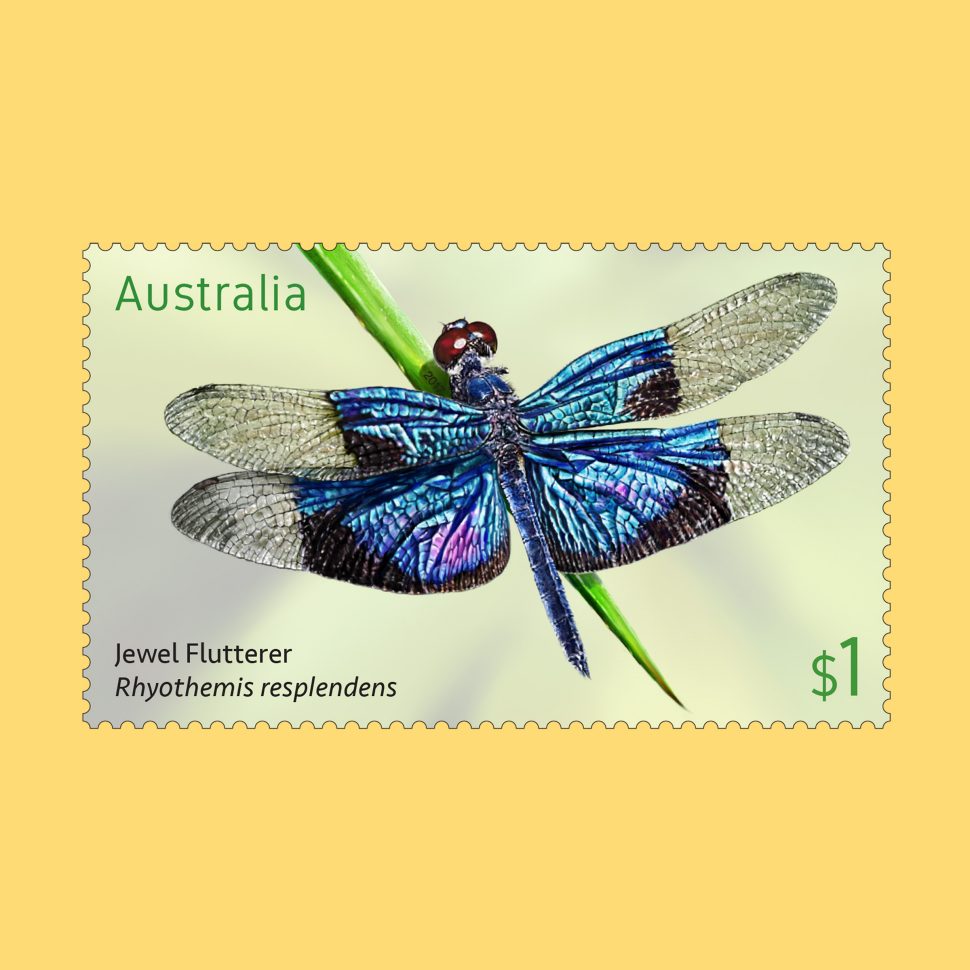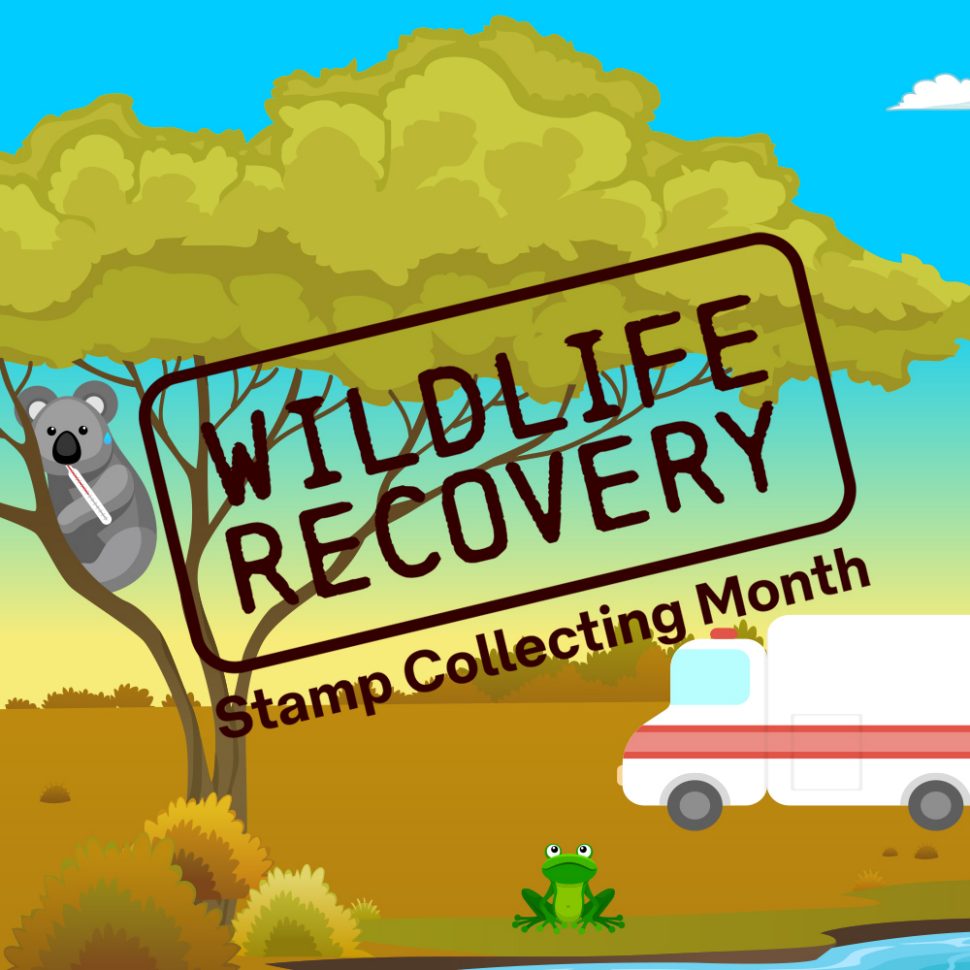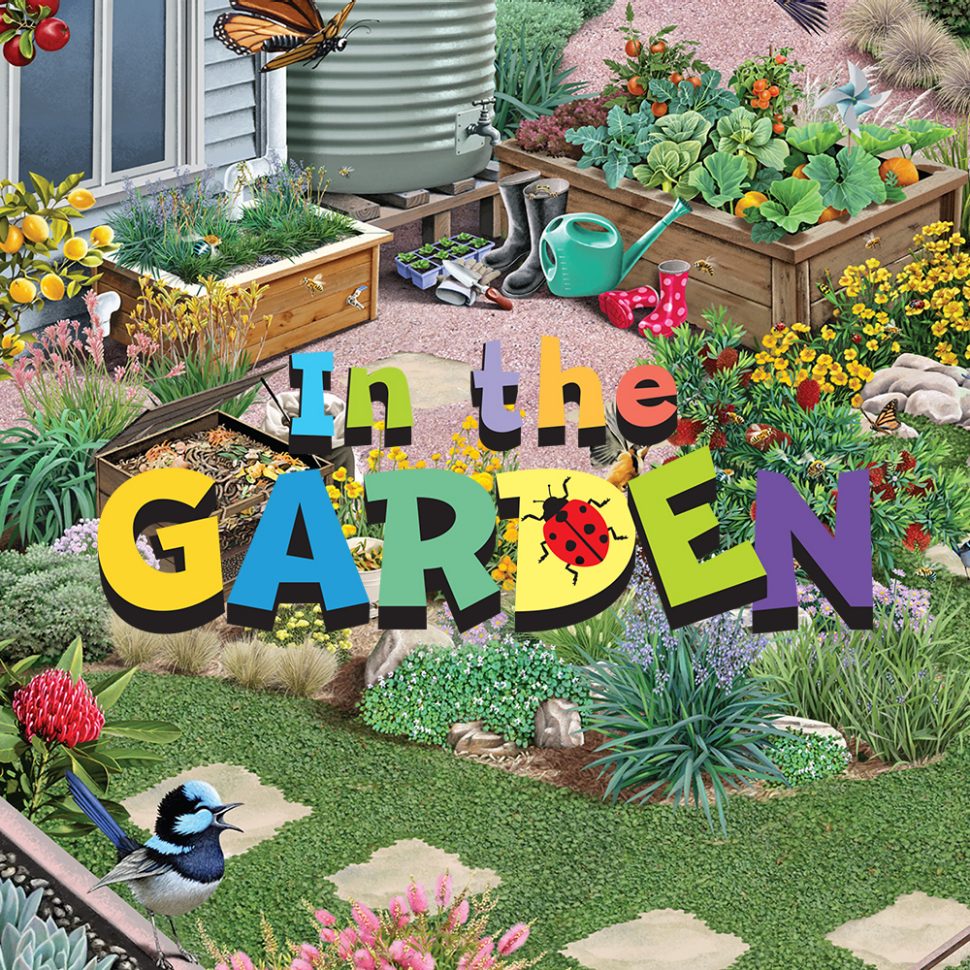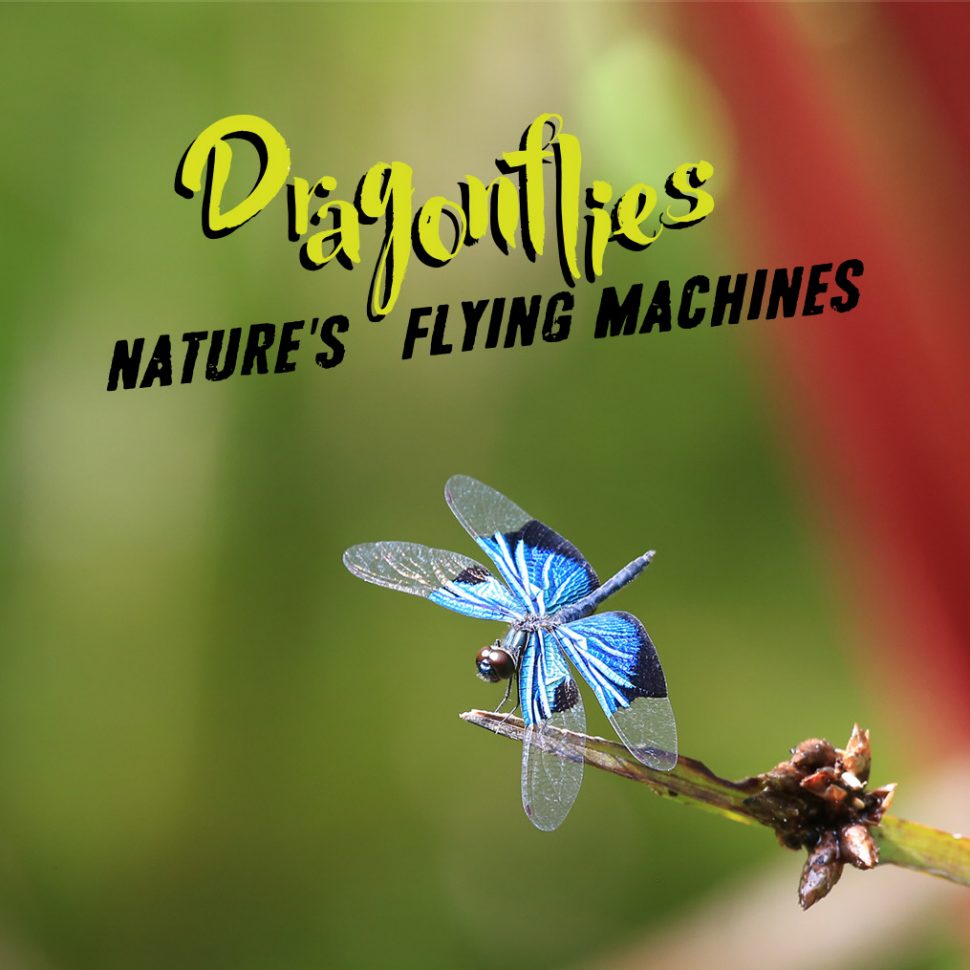| Time | Audio | Visual |
| 0:00 | This August is Stamp Collecting Month and this year’s theme is dragonflies! |
Video of |
| 0:05 | Dragonflies are among the most beautiful creatures of the insect world. Hovering weightless mid-air before darting at speed, dragonflies charm us with their fairylike appearance, varied brightness and large, delicate wings. |
Video panning showing a river flowing through dense foliage. Animated dragonfly is flying across the screen, zooming in and out. |
| 0:18 | Pre-dating dinosaurs, the original dragonflies were among the first winged insects to develop. Australia has five giant species, which have been around for about 190 million years! |
Animated dinosaur walking on low cliff edge beside |
| 0:25 | Text appears on video: Dragonflies have lived in mainland Australia for about 190 million years! |
|
| 0:31 | Like all insects, dragonflies have six legs, a head, thorax and abdomen. They have two pairs of wings that can move independently, giving them aerodynamic efficiency and phenomenal flying abilities. They can propel themselves upwards, downwards, forwards and even backwards, as well as hover and turn sharply and unpredictably. Some species can travel speeds of up to 70 kilometres per hour! |
Video of Video of an actual dragonfly resting on a tree branch. Fade to a different dragonfly also resting on a small tree branch before flying off. Video of a pool of water with a shallow waterfall to the right flowing into the pool. |
| 0:53 | Text appears on video: Some dragonflies can travel up to 70kPh! |
|
| 0:56 | Dragonflies mainly inhabit areas near freshwater sources, like streams and rivers, their presence signalling the health of the local ecosystem. |
Transition to a new video of a river running through a rocky area surrounded by thick foliage. |
| 1:05 | It is |
New video of |
| 1:10 | There are three stages in its life cycle: egg, larva and adult. |
Text appears on video: Life Cycle of a Dragonfly. Nature’s flying machines. |
| 1:15 | The female lays her eggs on either the water’s surface or into aquatic plant material, and the eggs later hatch into aquatic larvae, known as nymphs or mud-eyes. |
New blurred video with waterfall, ferns and rocks in the distance. Text appears on video: The females lays her eggs on the water’s surface or into aquatic plant material. Drawing of a female dragonfly laying eggs. |
| 1:21 | Most of the dragonfly’s life is spent in the larval stage, where it feeds on other larvae, insects and tadpoles, before emerging from its skin as a fully formed adult. |
Illustration of dragonfly larvae appears on screen Text appears on video: The dragonfly spends most of its life (up to 5 years!) in the larval stage |
| 1:29 | Test fades out and is replaced by 5 illustrations of larvae. |
|
| 1:31 | Illustration of dragonfly emerging from its Image of Australian Tiger dragonfly zooms in and takes up most of the video screen. |
|
| 1:35 | Another new video of a river with lots of rocks surrounded by ferns with trees in the distance. |
|
| 1:37 | The first dragonfly in this year’s stamp issue is the Scarlet Percher, which is a small dragonfly that inhabits creeks, rivers and still waters right across mainland Australia. |
Image of the $1 Scarlet Percher stamp spins and zooms in. Text appears on video: The Scarlet Percher is found all around Australia and is only 3.2cm long! |
| 1:45 | They prefer open sunny sites to shady areas and, unlike most other dragonfly species, they will perch on rocks. |
Images of a Scarlet Percher dragonfly on tree branches. |
| 1:53 | Our next dragonfly is actually a damselfly, which is a smaller relative of the true dragonflies. The Arrowhead Rockmaster is a beautiful mid-blue colour, with charcoal coloured wings. It lives in southern Queensland, coastal New South Wales and Victoria, where it inhabits rivers and streams. |
Video from above of rocky river bed within Image of the $1 Arrowhead Rockmaster stamp spins and zooms in. Text appears on video: Unlike true dragonflies, damselflies’ forewings and hindwings are the same size and shape as each other |
| 2:02 | Image of Arrowhead Rockmaster damselfly on |
|
| 2:07 | Another image of the Arrowhead Rockmaster Damselfly on a tree branch |
|
| 2:12 | The Australian Tiger is a strikingly beautiful dragonfly, named for its distinctive yellow-green striped appearance. It occurs in aquatic and coastal environments right across northern Australia and down the east coast through Queensland and New South Wales. |
New video of flooded river covering everything including the bottom parts of trees. Video blurs Text appears on video: The Australian Tiger has a wingspan of up to 10cm and its larvae will make burrows in the mud |
| 2:28 | Our fourth featured dragonfly is the Jewel Flutterer, which is a brilliant jewel-like species. Its wings are coloured with panels of spectacular metallic blue, and it can be found near rivers, creeks and still waters in Queensland, from Cape York Peninsula south to around Mackay. |
New video of Video changes to a blurred video of river and image of the $1 Jewel Flutterer stamp spins and zooms in. Text appears on video: The jewel flutterer is a tiny dragonfly, only 2-5cm long, with metallic blue wings |
| 2:37 | Image of Jewel Flutterer dragonfly resting on tree branch followed by an image of the Jewel Flutterer dragonfly resting on a flower leaf. |
|
| 2:45 | The final dragonfly in our series is the Beautiful Petaltail, which is one of five Giant Dragonfly species that are endemic to Australia. Adults can reach nine to 11 centimetres in |
Beautiful video of Video changes to a blurred video of rain railing on water and image of the $1 Beautiful Petaltail stamp spins and zooms in. Text appears on video: The Beautiful Petaltail feeds nocturnally, often on the larvae of other dragonflies! |
| 2:58 | Image of |
|
| 3:09 | Be sure to collect all five stamps in our Dragonflies issue, and learn more about these beautiful insects. |
Video of waterfall and river followed by the |
| 3:15 | ||
| 3:19 | Illustrated dragonfly moves up the screen before disappearing leaving just the Australia Post logo with Stamp Collecting Month website auspost.com.au/scm |
|
| 3:23 | Australia Post logo with Stamp Collecting Month website auspost.com.au/scm fades out before the video ends. |
Stamp Collecting Month (SCM) provides an exciting way for middle to upper primary school students (and their teachers) to engage with interesting themes through stamps. This website introduces you to the five dragonfly species featured in our SCM stamp issue, and contains videos, fun activities, teaching resources and more.
Meet the stars of our Dragonflies stamps
Our 2017 SCM stamp issue features five magnificent dragonfly species, via incredibly life-like illustrations. The dragonfly is one of the most captivating creatures in the insect world and was the first faunal creature in Australia to be described, after a specimen was collected in 1770.

Scarlet Percher
Percher species belong to the genus Diplacodes, which ranges through...

Arrowhead Rockmaster
The Arrowhead Rockmaster is a beautiful mid-blue colour...

Australian Tiger
The Australian Tiger is a striking dragonfly, its common name...

Jewel Flutterer
The Jewel Flutterer is, as its name suggests, a brilliant jewel-like...

Beautiful Petaltail
The Beautiful Petaltail is one of five Giant Dragonfly species that are...
Activities and resources
If you’re a parent, caregiver or teacher, here are some free SCM resources to share with children. Want some more advice on stamp collecting? Read our tips on starting a collection.
Resources for teachers
Bring nature's flying machines into the classroom with our SCM teaching resources, including five exciting units of work.
Fun activities for children
Fun dragonfly-themed activities for younger students including colour-ins, puzzles and fun things to do.

All about stamp collecting
If you’re new to stamp collecting, we’ve got some tips to get you going. The SCM stamp issue is a great place to start.












